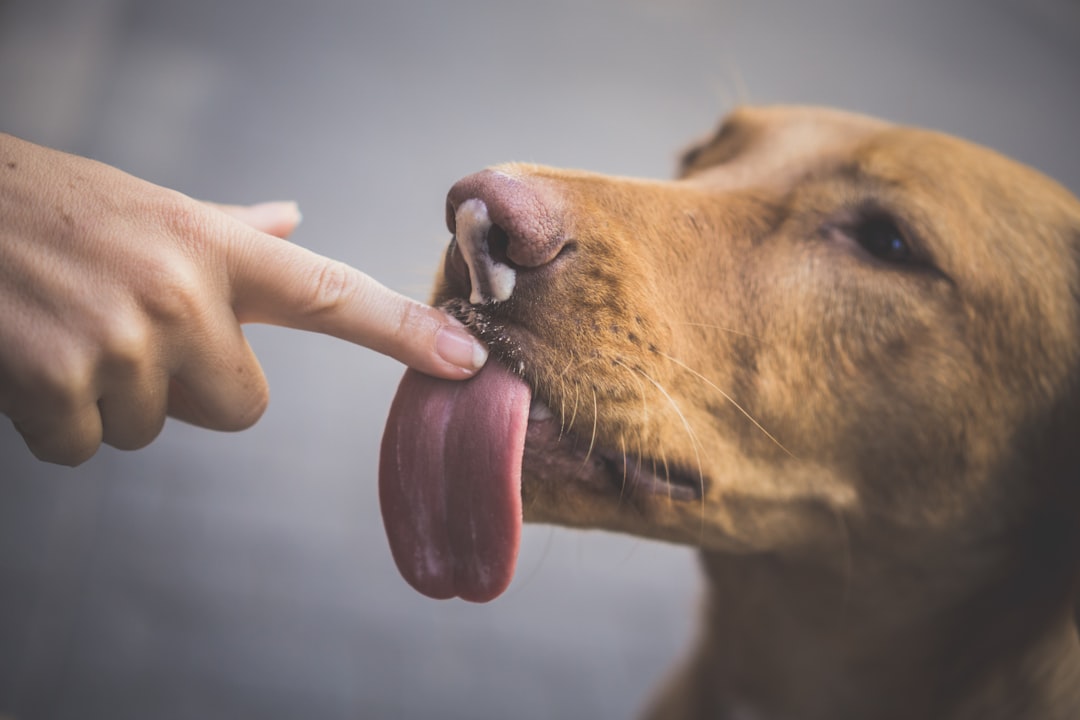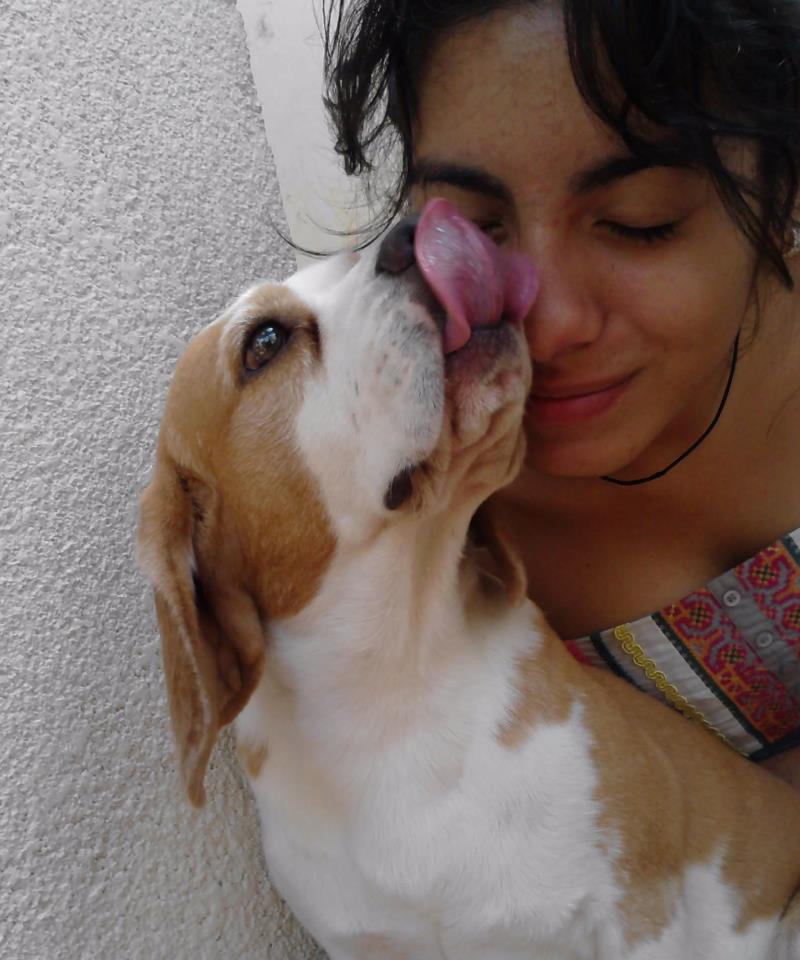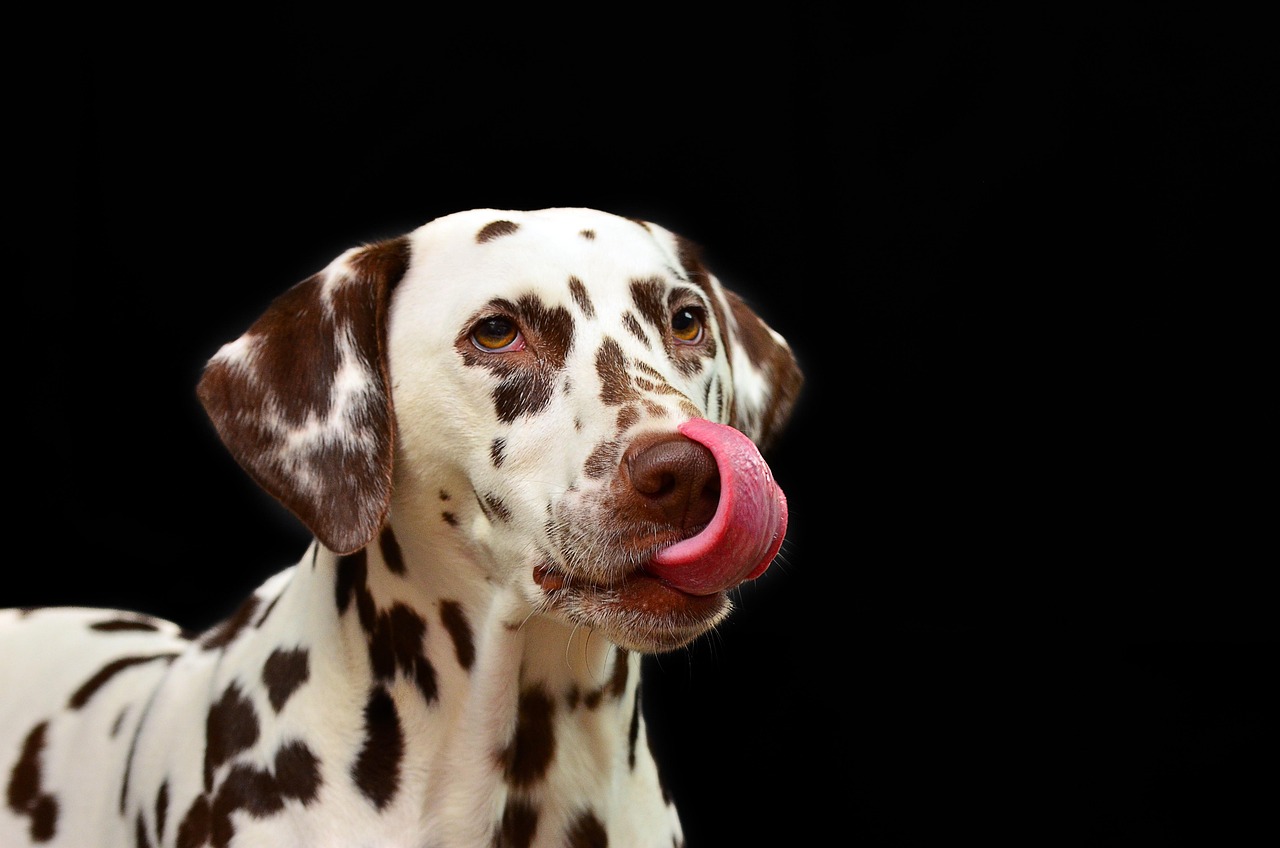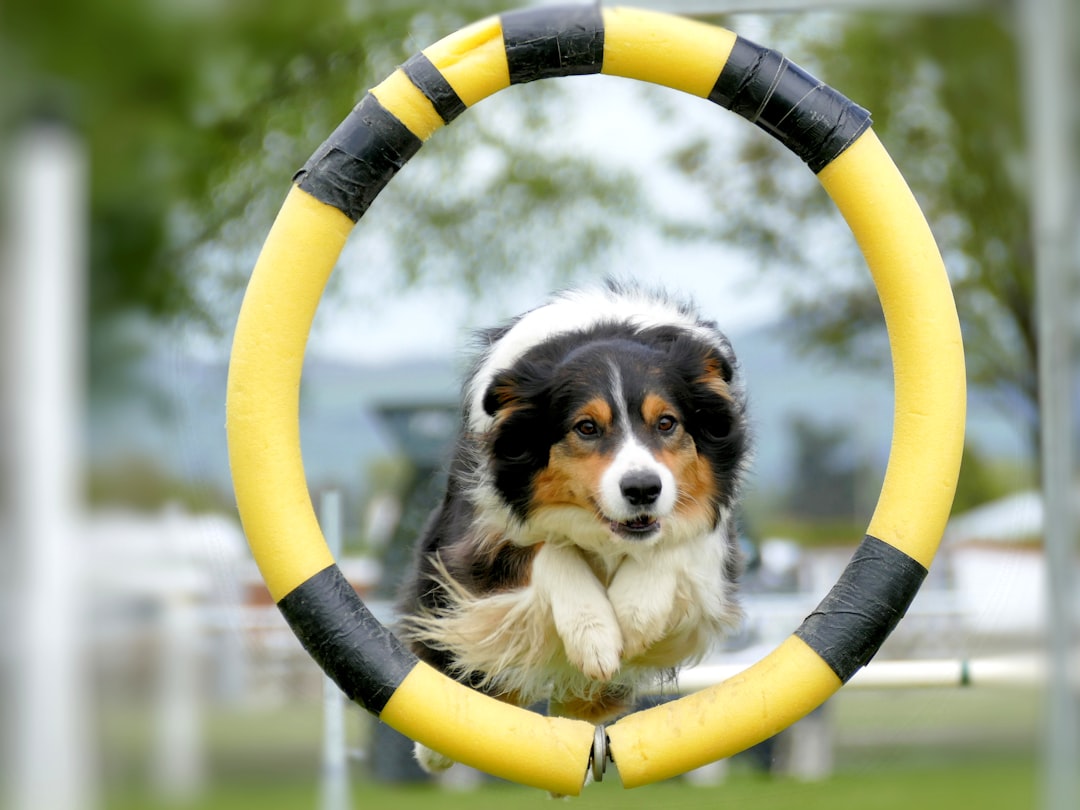You know that feeling when you walk through the door after a long day, and your furry best friend greets you with an enthusiastic display of wet kisses that just won’t stop? While those slobbery smooches can feel like the purest form of love, you might find yourself wondering if there’s something more behind your dog’s persistent licking habit. The truth is, your pup’s licking behavior is far more complex than just showing affection.
From deeply rooted instincts to surprising health clues, your dog’s tongue is actually their way of communicating a whole range of messages. Some might make your heart melt, while others could signal that your four-legged companion needs your help. Understanding what’s really going on behind all that licking can transform how you connect with your dog and even improve their overall wellbeing. Let’s dive into the fascinating world of canine licking behavior.
It’s Pure Love and Bonding

Licking can be a sign of affection, and it might also give a dog a feeling of security and comfort, just as the dog had when licked by its mother in the litter. This behavior takes us straight back to puppyhood, when mother dogs would gently lick their babies to show care and nurture them. Your dog is essentially treating you like family when those wet kisses land on your face.
Licking plays an important part of how they bond with others, causing them to release dopamine and endorphins that help make them feel relaxed, calm and happy. Just as it feels nice for us to stroke a dog, it probably feels nice for dogs to lick the ones they love.
When your dog licks you, both of you experience a boost in oxytocin, often called the “love hormone”. This hormone strengthens the bond between dogs and their owners, reinforcing licking as a behaviour that fosters trust and emotional connection. Think of it as your dog’s way of saying “I love you” in the most genuine canine language possible.
This emotional connection runs deeper than simple affection. Licking is a natural canine behavior that helps release endorphins, promoting a sense of calm and relaxation. It’s also a key way dogs communicate with one another, essentially, it’s their version of social bonding.
They’re Actually Trying to Get Your Attention

When training your dog not to lick you, understand that this behavior is typically attention-seeking. So if you give your dog any type of attention because of the licking, whether it’s positive or negative, you are unintentionally rewarding the behavior. Your clever pup has figured out that a few strategic licks will get your eyes on them faster than almost anything else.
Some dogs lick excessively as a behavioral quirk to gain attention. Recognizing whether it’s an affectionate or attention-seeking action involves observing when and how your dog licks you. Does this occur when you’re preoccupied at work, spending time on the couch, or engaged with another task? If so, it may be a nudge from your pup indicating they need something from you.
This reaction from the human can accidentally reinforce the behavior of licking, and the dog learns this is a great way to get the human’s attention. Even saying “stop it” while laughing or pushing them away counts as attention in your dog’s mind.
If you start talking to your dog or paying attention to them when you notice them licking, then dogs can learn to lick more often as an attention-seeking behavior. Essentially every time your dog licks, you reward them with positive reinforcement. But, because you were unaware that you were reinforcing this behavior, your dog has trained you and you haven’t trained them.
You Simply Taste Amazing to Them

Certified applied animal behaviorist Dr. Mary Burch points out that humans have slightly salty skin, especially after sweating during exercise. Therefore, those licks might be more about seeking salt than giving affection. Your skin is basically a delicious treat buffet for your dog, particularly after you’ve been active.
When we sweat we release salt and acidic chemicals that may taste delicious to our dogs. Your dog may also lick your face and hands, smelling minuscule remnants of something you’ve eaten or nice smelling moisturising creams or lotions. Every meal you eat, every lotion you apply, and every activity you do leaves fascinating flavor traces that your dog’s incredible tongue can detect.
Does your dog lick you after a sweaty workout? Dogs love the taste of our salty sweat. They are usually food-motivated and love to lick their humans, other pets, or even the floor or furniture to taste whatever food flavor is on those surfaces. They may lick the kitchen counters or dining table to get the food crumbs humans have left behind.
Thanks to the food you eat, your lips and mouth contain all sorts of attractive smells and tastes for your dog. This may explain why some pups really want to plant a slobbery kiss right on your lips after you eat.
They’re Showing You Empathy and Comfort

If your dog is concerned about you, they may try and lick you to make you feel better and care for you. In a 2012 study, researchers asked owners to pretend to cry and found that their dogs were more likely to lick and nuzzle them than when their owners were just humming or talking. Your dog has an incredible ability to sense when something’s wrong and wants to help in the only way they know how.
Unlike humans, no other animals have knowledge about or access to proper healthcare. So, when they get injured, their first instinct is to lick their wounds. This helps them numb the pain to a certain extent, and also clean the wound. Thus, when your dog sees a wound on you, their natural instincts kick in and they try to help you by licking the wound, thinking it will clean the wound and lower the pain.
This caring behavior stems from deep evolutionary programming. It’s possible that these dogs were just displaying a learnt behaviour, but many of us would argue that dogs can, to some extent at least, share and understand our feelings.
She might also lick as an appeasement gesture if she thinks you’re upset with her. Sometimes your dog is essentially saying “please don’t be mad” through gentle licks, trying to smooth over any tension they might sense.
It Could Signal Stress or Anxiety

Just like humans might nervously tap their feet or bite their nails, dogs can develop excessive licking as a coping mechanism for stress or anxiety. This could be triggered by separation anxiety, loud noises, changes in their environment, or even boredom. The licking can release endorphins, providing a temporary sense of calm. Think of it as your dog’s version of stress-eating or fidgeting.
Excessive licking may arise from an anxious or stressed dog, using the action as self-soothing tinnitus. Dogs often resort to licking when dealing with changes in the home or feeling particularly anxious from new environments or sounds. Observing the context in which dogs lick can reveal significant insights into the dog’s body language, illuminating potential triggers.
If your furry best friend is licking you, an object, or themselves nonstop, it could be a sign of stress, anxiety or another behavioral issue such as Obsessive Compulsive Disorder (OCD). That’s because licking is a calming technique for dogs and they sometimes lick to displace another behavior, such as anxiety.
In some cases, repetitive licking can escalate into a compulsive behavior, similar to OCD in humans. This might manifest as persistent licking of objects, themselves, or even the air. Genetic predispositions and environmental stressors can contribute to the development of canine OCD.
There Might Be an Underlying Health Issue

Gastrointestinal Issues: Nausea, acid reflux, or other digestive discomfort can prompt dogs to lick excessively. They might be trying to soothe their upset stomach or alleviate a feeling of unease. Your dog’s persistent licking might actually be their way of telling you their tummy doesn’t feel quite right.
Research has shown that GI abnormalities are commonly identified in dogs with excessive licking behavior. These abnormalities included eosinophilic and/or lymphoplasmacytic infiltration of the GI tract, delayed gastric emptying, irritable bowel syndrome, chronic pancreatitis, gastric foreign body, and giardiasis. Research shows that excessive licking can often point to digestive problems that aren’t immediately obvious.
Dental Problems: Toothaches, gum disease, or foreign objects lodged in the mouth can cause a dog to lick frequently to relieve the pain or irritation. Pain: Localized pain, whether from an injury or arthritis, can sometimes cause a dog to lick the area to comfort themselves. Neurological Issues: In rare cases, excessive licking can be a symptom of an underlying neurological problem.
Skin allergies are one of the most common reasons behind excessive licking in dogs. Your dog could be reacting to a variety of allergens, including certain foods, pollen, dust, mold, hay, mites, flea saliva, or even household products like detergents and cleaners. Dogs with allergies often focus their licking on specific areas, such as their paws or belly.
How to Manage Excessive Licking Behavior

One tip for how to teach your dog not to lick, then, is to eliminate the attention you give your dog when he licks. Other than removing your attention, a change in body language will help you make your point: When your dog starts to lick you, say, “Nope!” and withdraw your attention while moving away. Consistency is absolutely crucial here because mixed messages will confuse your pup.
Ignore them when they lick. Your dog may use licking as a way to get your attention. When they lick you, stand up and leave the room. This will show them that licking you doesn’t give them what they want. This might feel harsh at first, but you’re teaching them a valuable lesson about appropriate ways to seek attention.
Dog training experts recommend teaching something called a “positive interrupter” to your dog. When your dog is licking and you want them to stop, say a specific phrase, like “That’s all” or “That’s enough,” and then throw some treats on the ground by the dog. This effectively interrupts the licking and, with your dog’s attention, you can now redirect them to something else you would like them to do, like laying on a mat with a bone, or sitting for treats.
Engage your dog in alternative activities to divert their attention from licking. Offer chew toys, engage in play, or provide mental stimulation through puzzle toys. Reduce the opportunity and desire to engage in excessive licking by redirecting their focus to these appropriate behaviors. This strategy is particularly effective for dogs that lick out of boredom or as a form of self-soothing.
Understanding your dog’s licking behavior opens up a whole new world of communication between you and your furry companion. Whether it’s pure love, a cry for attention, or a subtle health signal, every lick tells a story worth listening to. The key lies in observing the context, frequency, and your dog’s overall behavior to decode what they’re really trying to say. Remember, a little detective work combined with patience and consistency can help you both navigate this wet and wonderful aspect of your relationship. What patterns have you noticed in your own dog’s licking habits?

Gargi from India has a Masters in History, and a Bachelor of Education. An animal lover, she is keen on crafting stories and creating content while pursuing a career in education.






